Low Sodium Foods for People with High Blood Pressure (Hypertension)
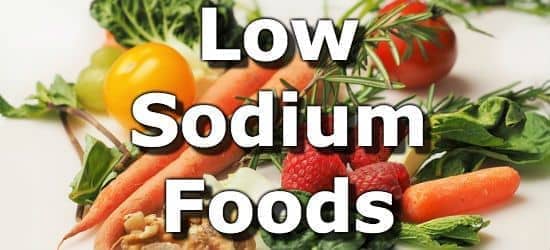
Sodium is an essential nutrient required by the body for maintaining blood volume and pressure and for transmitting nerve impulses.
Sodium, together with chloride forms table salt or sodium chloride. Processed foods are by far the largest contributor of sodium in the diet, accounting for about 80% of our total sodium intake.
Over-consumption of sodium increases the risk of developing high blood pressure (hypertension), which in turn increases the risk of heart disease and stroke. As such, it is wise to regulate the amount of sodium you eat, and if you have high blood pressure to restrict your consumption of sodium, while boosting your consumption of potassium.
The current daily value (DV) for sodium is 2300mg, however, the American Heart Association recommends that people with high blood pressure eat less than 1500mg per day or less than 3/4 of a tablespoon of salt.
Fortunately, almost all foods are naturally low in sodium and it is easy to avoid consuming sodium if you stick to eating whole unprocessed foods without adding any salt or sauces. So a low sodium diet could be seen as more of an exercise in avoiding high sodium foods, than eating low sodium foods.
Healthy low sodium foods include vegetables, fruits, beans, grains, legumes, nuts, meats, oils, and fish. Be sure foods are not canned, or otherwise prepared with salt, or sauces that contain salt. Below is an overview of the top 10 foods lowest in sodium for your blood pressure diet.
-
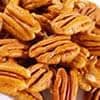 1. Pecans
1. Pecans
Sodium
per OzSodium
per 100gSodium
per 200 Calories0mg
(0% DV)0mg
(0% DV)0mg
(0% DV)More Low Sodium Nuts
- 0% DV in 1 oz of almonds
- 0% DV in 1 oz of pistachios
- 0% DV in 1 oz of walnuts
Low sodium numbers only apply to unsalted nuts.
See the full list of nuts low in sodium.
-
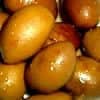 2. Olive Oil
2. Olive Oil
Sodium
per TablespoonSodium
per 100gSodium
per 200 Calories0.1mg
(0% DV)2mg
(0% DV)0.5mg
(0% DV)More Low Sodium Oils
- 0% DV in 1 tblsp of peanut oil
- 0% DV in 1 tblsp of sesame oil
- 0% DV in 1 tblsp of rice bran oil
See the full list of low sodium fats and oils.
-
 3. Basil
3. Basil
Sodium
2 TblspSodium
per 100gSodium
per 200 Calories0.2mg
(0% DV)4mg
(0% DV)34.8mg
(2% DV)More Low Sodium Herbs
- 0% DV in 1 tsp of thyme
- 0% DV in 1 tsp of rosemary
- 0% DV in 1 tsp of dried oregano
See the full list of spices and herbs low in sodium.
-
 4. Cinnamon
4. Cinnamon
Sodium
1 TblspSodium
per 100gSodium
per 200 Calories0.8mg
(0% DV)10mg
(0% DV)8.1mg
(0% DV)More Low Sodium Spices
- 0% DV in 1 tsp of pepper
- 0% DV in 1 tsp of cayenne pepper
- 0% DV in 1 tsp of nutmeg
See the full list of spices and herbs low in sodium.
-
5. Apples
Sodium
per CupSodium
per 100gSodium
per 200 Calories1.3mg
(0% DV)1mg
(0% DV)3.8mg
(0% DV)More Fruits Low in Sodium
- 0% DV in 1 cup of cherries
- 0% DV in 1 cup of bananas
- 0% DV in 1 tsp of oranges
Almost all fruits are low in sodium. See the full list of 146 low sodium fruits.
-
6. Green (Snap) Beans
Sodium
per Cup CookedSodium
per 100gSodium
per 200 Calories1.3mg
(0% DV)1mg
(0% DV)5.7mg
(0% DV)More Vegetables Low in Sodium
- 0% DV in 1 cup of cucumber
- 0% DV in 1 cup of peas
- 1% DV in 1 cup of spinach
Almost all vegetables are low in sodium. See the full list of 200 low sodium vegetables.
-
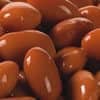 7. Kidney Beans
7. Kidney Beans
Sodium
per CupSodium
per 100gSodium
per 200 Calories1.8mg
(0% DV)1mg
(0% DV)1.6mg
(0% DV)More Beans and Lentils Low in Sodium
- 0% DV in 1 cup of navy beans
- 0% DV in 1 cup of pinto beans
- 1% DV in 1 cup of black beans
Note: Note: Beware of high sodium levels in canned beans with added salt.
See the full list of beans low in sodium.
-
 8. Brown Rice
8. Brown Rice
Sodium
per CupSodium
per 100gSodium
per 200 Calories2mg
(0% DV)1mg
(0% DV)1.8mg
(0% DV)More Grains Low in Sodium
- 0% DV in 1 cup of oatmeal
- 0% DV in 1 cup of cornmeal (grits)
- 1% DV in 1 cup of quinoa
See the full list of grains low in sodium.
-
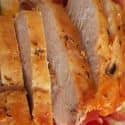 9. Lean Chicken Breast
9. Lean Chicken Breast
Sodium
in a 6oz BreastSodium
per 100gSodium
per 200 Calories79.9mg
(3% DV)47mg
(2% DV)59.9mg
(3% DV) -
 10. Salmon
10. Salmon
Sodium
per 6oz FilletSodium
per 100gSodium
per 200 Calories95.2mg
(4% DV)56mg
(2% DV)61.5mg
(3% DV)Other Fish Low in Sodium
- 3% DV in a trout fillet
- 4% DV in a tuna fillet
- 4% DV in a salmon fillet
See all fish low in sodium.
From the Nutrient Ranking Tool
Use the ranking tool links below to select foods and create your own food list to share or print.
- Foods High in Sodium
- Foods Low in Sodium
- Vegetables High in Sodium
- Fruits High in Sodium
- Vegetarian Foods High in Sodium
- Nuts High in Sodium
- Grains High in Sodium
- Beans High in Sodium
- Dairy High in Sodium
- Breakfast Cereals High in Sodium
- Fast Foods High in Sodium
View more nutrients with the nutrient ranking tool, or see ratios with the nutrient ratio tool.
Related
Data Sources and References
Try the recipe nutrition calculator, or daily meal planner.
Create a free account to log and track foods.

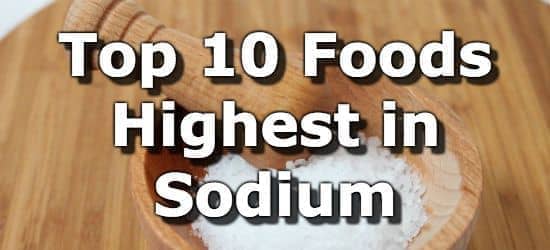 Next ➞
Next ➞